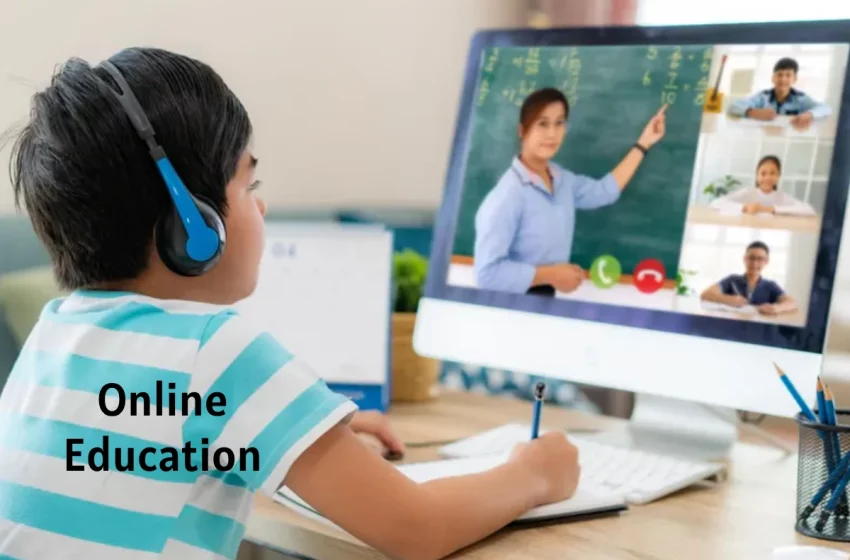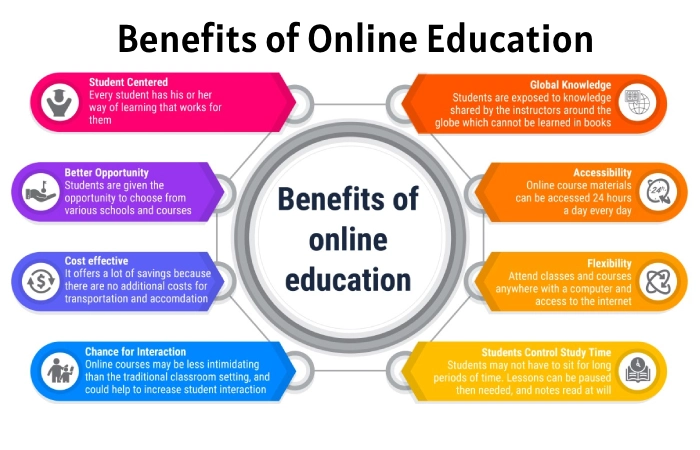
How Developed is Online Education in India?
Table of Contents
Introduction
A lot of modifications have recently implement in the educational system. The COVID-19 outbreak and subsequent lockdowns have had an impact on India’s school system. Children could not continue their education because they had been confined to their homes for months. What they thought was a joyous platform turned out to be a terrible catastrophe. They had been deprived of their learning. Therefore the government sought to create an alternative, which was online education.
Online education is changing the face of the Indian education system. Since the New Education Policy (NEP) was implemented in 2020, many changes have been made to the education sector, including online education. E-learning is the greatest and only remaining alternative. To engage with students, university faculty members are creating accounts on online video conferencing platforms such as Zoom, Skype, Google Classroom, and Meet, among others. This new media offers the prospect of on-demand digital content at any time or on any digital device, but this poses challenges for both administration and students. Today’s digital media is a fusion of traditional learning methods such as books and notebooks with digital software like eBooks and PDFs. Universities like IIT Roorkee, Amity University, SRM University, IGNOU, Chandigarh University, Jain University, etc. have expanded numerous learning programs to incorporate new e-learning paradigms.
From this article, you will learn everything about the changes that occurred in the education system and how digital teaching methods skillfully replaced the traditional way of teaching.
Benefits of Online Education

- Due to the global pandemic, online education has reduce to the most fundamental levels schools and universities. Students with long-distance commutes find it a more flexible and accessible option because education comes to their doorstep.
- Online education is a good alternative for working folks who want to extend their education or gain more knowledge. It is more adaptable to their current schedules, and they may complete the coursework without compromising their present occupations or vital family chores.
- Compared to the costs of attending college, online education is more affordable and beneficial to candidates who want to continue going to college but are unable to do so. They can also continue working while obtaining the necessary skills.
- Students can study while sitting at home, surrounded by the natural beauty of their favorite places, as opposed to traditional learning, which requires them to sit within four classroom walls. When students choose their environment, they are more comfortable and able to concentrate on the subjects they are studying without interruptions or objections.
- Due to the enormous number of students and the short time available in a classroom, teachers can’t focus on each student’s learning. In online education, the teacher focuses more on the student’s progress, and the student can clear their backlog at any time of the day. This improves student-teacher engagement.
- All students cannot be generalized, and each student learns at their own pace. In an offline classroom, where everyone is taught simultaneously, everyone may not get them at the same rate, some faster, some slower. Online education lets students learn at their speed and in their environment. Unlike traditional learning, it does not require students to adapt to their own pace but instead adjusts to the students.
- There is a limitation to the native population of students in a traditional classroom, but with digital classrooms, faculties will be able to address not only the native population but also the global population. Even in terms of teaching, they will not be restricted and will be able to hire professionals from all around the world.
- On account of low network access, conducting live sessions and streaming them for children in rural India is not practical. Although rural communities are learning about new technologies like cell phones, laptops, and tablets and are doing everything they can to afford them, a lack of internet network supply remains a significant issue.
Importance of Online Education
As it provides students with considerable flexibility, online education has become a practical and exciting way of instructional delivery in a global business that operates on a 24/7 schedule. Due to the growing ease of internet usage and computer technology. Students can now access information that was previously only available in conventional classrooms at any time and from any location. Furthermore, studies have proven that children learn just as well in an online classroom as they do in a traditional classroom.
there are:
- Online education allows both the teacher and the student to build their own pace for learning. There is also the option of creating a schedule that accommodates everyone’s to-do list.
- As a result, adopting an online educational platform allows for a better balance of work and study. If with no need to sacrifice anything in any aspect of life.
- The most delicate aspect of online education is that students in India are enthusiastic about it. They want to exhibit their abilities and skills while studying in a conducive and participatory atmosphere.
- Online education has removed geographical and financial barriers to obtaining a high-quality education.
- Online education allows professionals to recover and upgrade their skill set while continuing to work. This enables them to stay current on current breakthroughs and innovations.
- Online education is a time-saving and cost-effective way to advance in any field.
Online Education and institutes like IIT Roorkee Great Lakes University, SRM University, IGNOU, Chandigarh University, and UT Austin University. I have quality education and, in general. The learning experience has witnessed tremendous growth. The majority of students in India aspire to work in the IT and business fields. The most crucial part of online schooling is that there are no constraints.
Regarding India’s skills and population, Distance Education has a bright future, and students’ expectations are relatively high. Furthermore, several company competitors have anticipated the extent of this expanding market and are intending to enter the online education field. To summarise, online education is poise to transform the educational panorama in India at the present time.
Major Challenges While Incorporating Online Education

- Incorporating online education into the general curriculum is not an easy undertaking. Such as the set of rules and regulations brings with it a slew of new obstacles.
- Unaffordability is a significant problem for low-income groups like farmers, maids, home employees, and sweepers. Purchasing a computer or laptop is a challenge.
- Online classes do not provide hands-on learning for arts and science subjects. Even if teachers can convey the theoretical parts students require practical instruction. In to understand what they have learned, which is most frequent in science.
- India has a restricted number of resources to administer an online examination.
- It is also a significant difficulty for teachers. It did not confirm whether or not a classroom teacher is capable of instructing in online sessions.
Conclusion
COVID- 19 pandemic and consecutive lockdowns have wreaked havoc on India’s education sector. With the introduction of a new set of laws established by the Indian government in 2020. We may predict that digital methods of learning and education will become the new normal. However, several obstacles have face by the students mentioned above.
Online education will become a part of everyone’s life shortly, and we must gear for the transformation. It is no longer an option but rather a requirement. If online learning can play a role here, it is obligatory for all of us to traverse its full potential. You can check out the Great Lakes University and take a step towards our bright future.
Also Read: What is Unlike Clubhouseoremus Onezero?


